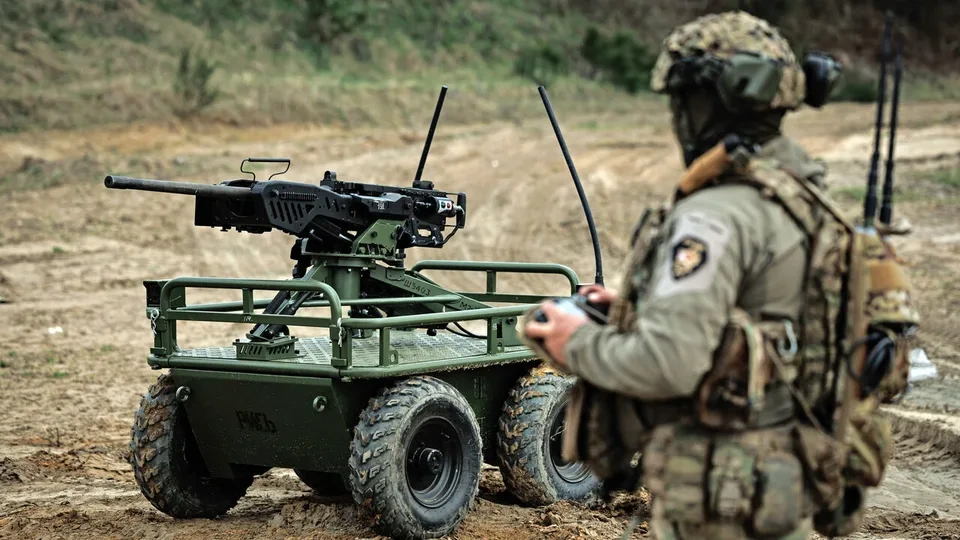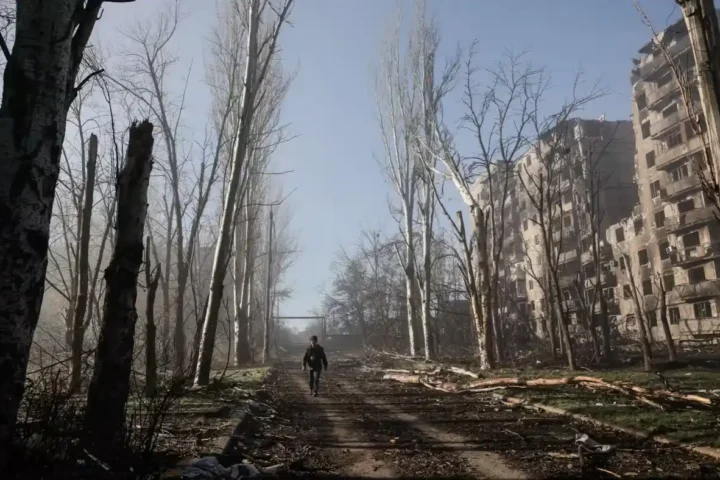On the outskirts of Kyiv, amid concrete ruins and overgrown weeds, lies a new kind of laboratory. At the training base of Ukraine’s 3rd Assault Brigade, what once seemed like science fiction is rapidly becoming reality: unmanned ground vehicles (UGVs) are being prepared for combat scenarios in which machines take over the most dangerous tasks once performed by soldiers.
This so-called “Kill House” isn’t just a military training site — it’s a proving ground for Ukraine’s emerging doctrine of robotic warfare. As The Economist notes, Ukraine is becoming the staging area for a new paradigm: machine-led conflict.
UGVs: The Next Generation of Ground-Based Military Drones
Today, around 40 Ukrainian companies are developing over 200 different UGV models. These systems fall into three functional categories:
- Logistics robots: delivering ammunition, fuel, water, and evacuating the wounded
- Engineering platforms: laying and clearing mines, establishing communication lines
- Combat systems: equipped with grenade launchers, machine guns, or anti-drone turrets
Each unit is typically customized before deployment — fitted with cameras, enhanced communications, or electronic warfare shielding. Their purpose is to operate in high-risk environments where human exposure would be deadly — particularly in the “grey zone” near the front lines, constantly patrolled by enemy drones.
Replacing Soldiers with Robots: Practical Applications on the Front
“Stark,” the commander of the UGV training program at the Kill House, says that in specific scenarios, robots are already substituting entire squads. For instance, the Ardal evacuation drone retrieves wounded troops without risking medics. Heavy-duty “mule” drones deliver tons of supplies under fire. Next-gen mine-laying UGVs can deploy dozens of anti-tank mines per sortie — previously a dangerous manual task.
Among the most sophisticated models is the Hyzhak (“Predator”), which uses AI to autonomously shoot down enemy drones from up to 200 meters away. Its “brother,” the Liut (“Fury”) — a 7.62mm machine-gun platform — debuted during a Ukrainian incursion into Russia’s Kursk region in August 2024. According to Vasyl, the founder of UGV Robotics, the system so shocked Russian forces that they revealed their positions, allowing other Ukrainian units to strike.
From Foot Escorts to Remote Control Warfare
In the early days, UGVs required close proximity to their operators — no more than a kilometer away. Fighters from the 92nd Brigade, “Shadow” and “Shura,” recall walking alongside their prototype to the front line — a suicidal risk in today’s drone-dominated environment.
Now, operators manage these machines from command posts dozens of kilometers away using Starlink. “We’ve got full battlefield visuals on screen,” says Shadow. “One of us is piloting; the other can drink a Coke or take a smoke break.”
This shift drastically reduces human risk, improves command efficiency, and paves the way for scaled deployment of robots in logistics and tactical support roles.
Limitations and the Path Forward
Still, the technology faces serious limitations. Starlink struggles under tree cover or in complex terrain. Mesh networks — where drones relay signals between each other — can collapse if critical nodes are destroyed. According to Viktor, an engineer at the Burevii design bureau, mass deployment of UGVs in offensive operations won’t be feasible until next-generation AI and machine vision systems are introduced.
There’s also a shortage of experienced operators. “Very few have survived enough missions to become reliable,” Viktor admits. Training and survivability are now as critical as hardware.
Why Ukraine Leads — For Now
Ukraine currently leads the UGV race, but largely out of necessity. Russia adds 8,000 to 9,000 new troops every month and doesn’t yet face the same pressure to automate. However, as The Economist warns, history may repeat itself: Ukraine innovates, Russia copies, standardizes, and scales — as seen in the FPV drone boom.
Still, Ukrainian developers insist their efforts are not in vain. Even partial replacement of manpower can have strategic value. “If we can substitute just 1% of our infantry on the front — that’s a success,” says Vasyl. “And honestly, I think we can do even better than that.”
Ukraine is fast becoming the world’s leading testing ground for robotic warfare. The battlefield is transforming: sensors instead of soldiers, code instead of trenches, machine vision and AI instead of brute force. If 2023 was the year of aerial drones, 2025 may well be the year of autonomous ground systems. And the country that learns how to scale them first will define the future of modern war.
This article was prepared based on materials published by The Economist. The author does not claim authorship of the original text but presents their interpretation of the content for informational purposes.
The original article can be found at the following link: The Economist.
All rights to the original text belong to The Economist.


















